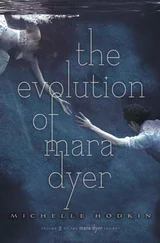Benjamin Hale - The Evolution of Bruno Littlemore
Здесь есть возможность читать онлайн «Benjamin Hale - The Evolution of Bruno Littlemore» весь текст электронной книги совершенно бесплатно (целиком полную версию без сокращений). В некоторых случаях можно слушать аудио, скачать через торрент в формате fb2 и присутствует краткое содержание. Год выпуска: 2011, Издательство: Twelve, Жанр: Современная проза, на английском языке. Описание произведения, (предисловие) а так же отзывы посетителей доступны на портале библиотеки ЛибКат.
- Название:The Evolution of Bruno Littlemore
- Автор:
- Издательство:Twelve
- Жанр:
- Год:2011
- ISBN:нет данных
- Рейтинг книги:5 / 5. Голосов: 1
-
Избранное:Добавить в избранное
- Отзывы:
-
Ваша оценка:
- 100
- 1
- 2
- 3
- 4
- 5
The Evolution of Bruno Littlemore: краткое содержание, описание и аннотация
Предлагаем к чтению аннотацию, описание, краткое содержание или предисловие (зависит от того, что написал сам автор книги «The Evolution of Bruno Littlemore»). Если вы не нашли необходимую информацию о книге — напишите в комментариях, мы постараемся отыскать её.
goes beyond satire by showing us not what it means, but what it feels like be human — to love and lose, learn, aspire, grasp, and, in the end, to fail.
The Evolution of Bruno Littlemore — читать онлайн бесплатно полную книгу (весь текст) целиком
Ниже представлен текст книги, разбитый по страницам. Система сохранения места последней прочитанной страницы, позволяет с удобством читать онлайн бесплатно книгу «The Evolution of Bruno Littlemore», без необходимости каждый раз заново искать на чём Вы остановились. Поставьте закладку, и сможете в любой момент перейти на страницу, на которой закончили чтение.
Интервал:
Закладка:
And then there was the business of learning to use the toilet. Yes, I too would have to learn the curious human taboo about urinating and defecating in public. Back in the lab, my potty training had been a rigorously enforced process of conditioning, with sweet rewards and draconian punishments. I had been lavished with particularly sumptuous treats if I dealt with my bodily excretions properly, but if I urinated or defecated on the floor of the lab, I was chastised more severely than for any other trespass. In the lab there was a little plastic chamber pot, colored red and topped with a yellow plastic lid that had a hole in the center of it, which was affixed by a valve to the rim of the receptacle: this was called my “potty.” It had not taken me much time to learn to expel all my bodily fluids and solids into the recess of this thing, because I quickly realized that my living area was a far more pleasant place in which to be if the floor was not , in fact, splattered with my piss and shit. After I came to understand the purpose of the potty, I was glad to acquiescently squat on the lid and deposit the contents of my bowels into its red plastic concavity; soon thereafter one of the lab assistants would swoop in to bear my waste away and would return shortly with the potty, emptied and freshly washed. This was a far cry from the disgusting conditions in the zoo, from the piss-sodden carpeting of cedar planting chips in our habitat, and I welcomed it. But when I began living with Lydia, I was introduced to the bathroom.
Lydia indicated to me that from now on, while I was living in her home, I was to exclusively use this gleaming white machine for bodily waste disposal. I examined it. I lifted the lid, peered inside, set it down again. I looked into the pellucid waters within, wondering where the hole in the curving bottom of it led to. I did not quite yet realize that the little red potty that I had learned to use in the lab was in fact designed to mimic this very device. I grasped the sides of the seat with my long rubbery hands and stared into its depths while Lydia tore a square of toilet paper — also a novel thing to me then — threw it in, and flushed. I watched, rapt in awe, as the suck-crash-thunder of the torrent of water gushing in from some unknown source caused the delicate square of tissue to spiral around and around the bowl until it was finally sucked out of sight through the mysterious hole in the bottom, and I marveled as the bowl, with a prolonged hissing noise coming from deep within the machine, refilled anew with clean clear water that trickled in slowly, rose to a certain level, and then, as if God had told it to, simply stopped — and then there was silence.
I was transfixed. I myself tore off a handful of toilet paper, threw it in the bowl, yanked the trigger, and watched the machine repeat the whole magic show. I was so mesmerized by it that I probably would have kept at it until every last square of toilet paper in the world had vanished down the gurgling throat of this porcelain beast, had Lydia not stopped me to try to explain that this new machine was expressly for the disposal of one’s urine and feces. She calmly explained to me that the next time I had to “pee” or “poop” I was to utilize this device. She asked me if I understood, and I replied — perhaps over-hastily — that I did.
The next time I felt my feces tunneling through my guts toward the light of my anus, I ran to the bathroom, and did not wait for her to arrive to supervise, to make sure I was doing it properly. By the time Lydia stood in the doorway, the deed was already done. Lydia’s face twisted up in an expression of disgust. Of course I’d simply shat on the floor, then started eagerly flushing toilet paper down the toilet. Lydia verbally rebuked me before tearing off a wad of toilet paper and used it to scoop up the little pile of shit I had made, threw it into the toilet and flushed. Then she washed her hands, and bade me to do likewise. Only then did I understand.
The bathroom is a fascinating place. Becoming human is a process of equal parts enlightenment and imprinting your brain with taboos. I too began to regard the simple biological imperatives of pissing and shitting as the ultimate acts of shame — more shameful even than sex, because while sex acts (aside from mere masturbation) necessarily require the participation and hence company of at least a second party, the expulsion of bodily waste is generally regarded as something to be performed only in abject solitude, and is unmentionable in polite society. It seems to me there are two things humans like to pretend simply do not happen — two things, two inescapable actions in life, one of which is a daily concern, and the other, come to think of it, is also a daily concern, even though it will only happen to you once: defecating and dying. There’s nothing else we treat with such embarrassment, such secrecy, nothing else we talk about in such couched euphemisms and hush-hush tones. Our sick and elderly we ferret away to die in the impersonal and sanitized environs of a hospital, pretending it’s only a temporary illness or a contagious virus requiring quarantine, confinement, shutting it out of the sphere of everyday life, and then when it happens we say that So-and-So has “passed away” or “gone to a better place.” And is that not exactly how we treat the very turds a healthy rectum must expel on a daily basis? We excuse ourselves from our fellows to disappear into this small bright sanitary room which no modern dwelling comes without, the sanctum of tiles and porcelain and running water, the hospital of the home, the place where we attend to matters of the body, where we bathe ourselves and bulwark our frail flesh and guts with all our hygienic defenses against a world that constantly besieges us with filth, the place of toothbrushing, flossing, shaving, applying makeup and deodorant, where we keep combs, brushes, hairspray, earwax syringes, toenail clippers, medicines and mouthwash, balms and salves, the place where we gaze at our reflections while sculpting ourselves into place for the day — and the place, Gwen, where we shit — where we lock ourselves in and secretly excommunicate these stinking brown heretics from our temples, then erase their miasma by thoroughly wiping the crevice between our nethercheeks with the ceremonial ablutionary tissue and send the whole mess spiraling into oblivion, down the maelström to the place of the unseen, sent to the underworld washed in the waters of Lethe — banished, forsaken, forgotten.
I was now walking bipedally almost all of the time. It was also around this time that I realized I was naked. And because I expressed a desire for clothing, Lydia took me shopping.

I had spent most of our life together naked before Lydia’s eyes, but for most of that time I did not yet know that I was naked. In fact, in my ape days I don’t think I even really realized that humans’ clothing was something physically apart from their bodies. Does that sound quaint to you? Such things are not necessarily immediately apparent. I failed to understand that clothes did not simply grow and regrow again on human flesh overnight, like a fungus. But as I became human, through careful observation I came to understand what clothes are. In the beginning of my acculturation, whenever Lydia took me to the lakefront in the summer, I would marvel to see the beautiful sapiens sapienettes all cavorting around on the sand with only two tiny membranous bits of elastic fabric keeping them from their animal nakedness. And I would watch and silently remark upon the changes of wardrobe Lydia went through in a day, the fascinating ephemera of her morning-to-night garment cycle: in the morning she peeled herself out of bed in her larval pajamas, of which she owned several pairs, including a nightgown of the old-fashioned variety typically worn by little girls in latently pedophilic Victorian children’s books, a slippery silk affair that her deceased mother had once sent her for a Christmas present, which shimmered and slithered all over her big mysterious body like a school of fish over underwater dunes (make a note of this nightgown, as it will later become important), and in this outfit she emerged from her sleeping chamber, rubbed at her eyes, padded around the house, woke Bruno if he wasn’t already awake, prepared a light breakfast for us while I exuberantly retrieved the newspaper from the doorstep — one of my few domestic chores in those early days, which I performed with the zeal of a fresh recruit — then ate with me, all in that woozy, discombobulated state of limbo between sleeping and waking, when the hands of clocks seem to circumnavigate their faces at several times the usual speed. Following breakfast Lydia would disappear into the bathroom, and I heard the blubbery thunder of the bathtub faucet change to the hissing-snake sound of the showerhead, and she later emerged from her room as if she had just peeled herself out of a cocoon — moist and new — and clad in her official outfit for the day. And it was never anything flashy or particularly descript. As I’ve indicated earlier, Lydia favored turtleneck sweaters and pants. I don’t think she even owned a skirt or a dress that ventured north more than a centimeter or two above the latitude of the knee. Lydia was not an overtly feminine woman — not a girly woman, maybe I should say. She was certainly feminine; she had a good but conservative fashion sense. I don’t think I ever saw her wear pink, for instance, and she almost never wore high heels. On her feet were usually sneakers for utility and inconspicuousness, or else that inelegant pair of dirt-brown clodhoppers she often wore. But Lydia had an intense relationship with the color green. It was her favorite color. She looked beautiful in green. Not that she didn’t look beautiful in other colors — or most beautiful of all in no clothes whatsoever (but I will get to that later). But green looked particularly good on her because it established a dialogue with her eyes. A casual perusal of Lydia’s closet would reveal a whole jungle of verdant items: green scarves, green dresses, green shirts and pants. In the early days I loved to play dress-up with Lydia’s clothes, before (and sometimes even after) I had clothes of my own to wear. It wasn’t just the fun of dressing up that I got a kick out of, but rather the tingling sensation that skittered all over my flesh when I slipped inside Lydia’s garments, the sweet flutter of feminine fabrics against my skin, these things that had clung as close to her naked flesh as I wanted to cling. For a while Lydia patiently suffered my love of dress-up: sometimes, as soon as we got home from the lab I would want to put on one of her dresses, and it was not easy to convince me to take it off. Sometimes, when Lydia was away on an errand and trusted me with free range of the apartment, I would sneak into her closet and not only put on one of her dresses, but sometimes I would awkwardly slip my legs into the holes of a pair of her panties from her underwear drawer, or stretch her pantyhose over my legs or arms. I knew by the special electric charge I received out of playing with these things that somehow they were more secret, more intimate, and more darkly passionate than Lydia’s hats or scarves or even her dresses. I sensed taboo in them, which was why I could bring myself to put them on for only a brief time, quickly parading a few turns around the apartment in her underwear or pantyhose before my cowardice got the better of me and I had to return them to the drawers where I had found them before Lydia came home. Then I would pry open the remote control and lick its nine-volt battery.
Читать дальшеИнтервал:
Закладка:
Похожие книги на «The Evolution of Bruno Littlemore»
Представляем Вашему вниманию похожие книги на «The Evolution of Bruno Littlemore» списком для выбора. Мы отобрали схожую по названию и смыслу литературу в надежде предоставить читателям больше вариантов отыскать новые, интересные, ещё непрочитанные произведения.
Обсуждение, отзывы о книге «The Evolution of Bruno Littlemore» и просто собственные мнения читателей. Оставьте ваши комментарии, напишите, что Вы думаете о произведении, его смысле или главных героях. Укажите что конкретно понравилось, а что нет, и почему Вы так считаете.












